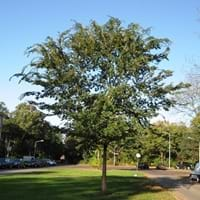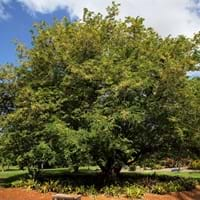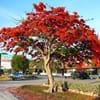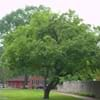Life Span
Perennial
Perennial
Origin
Eastern Asia
Africa, India, Southeast Asia
Types
Ulmus chumlia, Ulmus glabra, Ulmus elongata
Sweet Tamarind, Australian tamarind, Manila tamarind, Velvet tamarind, Spanish Tamarind
Habitat
River side
Subtropical climates, Tropical regions
USDA Hardiness Zone
5-9
9-11
AHS Heat Zone
9-5
Not Available
Sunset Zone
3a, 3b, 4, 5, 6, 7, 8, 9, 10, 11, 12, 13, 14, 15, 16, 17, 18, 19, 20, 21, 22, 23, 24
Not Available
Habit
Upright/Erect
Spreading
Flower Color
Red
Red, Yellow
Flower Color Modifier
Bicolor
Bicolor
Fruit Color
Tan, Brown
Brown
Leaf Color in Spring
Green
Green
Leaf Color in Summer
Dark Green
Dark Green, Green
Leaf Color in Fall
Yellow, Red, Green
Dark Green, Yellow green
Leaf Color in Winter
Not Available
Dark Brown, Green
Leaf Shape
Toothed
Pinnate
Plant Season
Spring, Summer, Fall, Winter
Spring, Summer, Fall, Winter
Sunlight
Full Sun, Partial Sun
Full Sun, Partial Sun
Growth Rate
Not Available
Slow
Type of Soil
Loam, Sand
Clay, Loam, Sand
The pH of Soil
Acidic, Neutral, Alkaline
Acidic
Soil Drainage
Well drained
Average
Bloom Time
Fall
Late Spring
Tolerances
Drought
Drought, Salt
Where to Plant?
Ground
Ground
How to Plant?
Seedlings, Stem Planting, Transplanting
Layering, Seedlings, Transplanting
Plant Maintenance
Medium
Low
Watering Requirements
Average Water Needs, Requires watering in the growing season, Water when top layer of soil becomes dry
Do Not over Water, Keep the ground moist but not water-logged
In Summer
Lots of watering
Lots of watering
In Spring
Moderate
Moderate
In Winter
Average Water
Average Water
Soil pH
Acidic, Neutral, Alkaline
Acidic
Soil Type
Loam, Sand
Clay, Loam, Sand
Soil Drainage Capacity
Well drained
Average
Sun Exposure
Full Sun, Partial Sun
Full Sun, Partial Sun
Pruning
Prune if you want to improve plant shape, Remove damaged leaves, Remove dead leaves, Remove shoots
Remove damaged leaves, Remove dead branches, Remove dead leaves
Fertilizers
organic fertlizers
6-6-6 or 8-8-8
Pests and Diseases
Mealybugs, Red blotch, Scale
Aphids, Borers, Mealybugs, Onion thrips, Root weevil, Soft scales, Whiteflies
Plant Tolerance
Drought
Drought
Flowers
Insignificant
Showy
Flower Petal Number
Single
Single
Foliage Texture
Fine
Bold
Foliage Sheen
Glossy
Matte
Attracts
Not Available
Beetles, Birds, Scale Insects
Allergy
allergic reaction
Diarrhea, Hives, Nausea, Vomiting
Aesthetic Uses
Bonsai, Landscape Designing
Beautification
Beauty Benefits
Not Available
Glowing Skin, Good for skin, Improve skin tone, Reduces ageing, Skin cleanser
Environmental Uses
Air purification, Food for birds, Food for insects, No fertilizer, pesticides, or herbicides needed, Prevent Soil Erosion
Food for animals, Food for birds, Food for insects, Nesting sites for birds
Medicinal Uses
Antidote, Demulcent, Diuretic
Antioxidants, Inflammation, Rheumatism, Skin Disorders, Sore throat
Part of Plant Used
Fruits, Inner Bark, Leaves
Flowers, Fruits, Leaves
Other Uses
Used as firewood, Used for its medicinal properties, Used in construction, Used in Furniture, Wood is used for making furniture, Wood is used for ship building, Wood is used in construction
Culinary use, Used as a nutritious food item, Used as Ornamental plant, Used for its medicinal properties
Used As Indoor Plant
Yes
No
Used As Outdoor Plant
Yes
Yes
Garden Design
Container, Feature Plant, Mixed Border, Shade Trees, Street Trees, Topiary / Bonsai / Espalier
Edible, Fruit / Fruit Tree, Shade Trees
Botanical Name
ULMUS parvifolia 'Drake'
Tamarindus indica
Common Name
Chinese Elm, Drake Elm
Tamarind tree, Tamarind
In Hindi
चीनी एल्म
इमली का पेड़
In German
Chinese Elm
Tamarinde
In French
Elm chinoise
tamarinier
In Spanish
olmo chino
tamarindo
In Greek
Κινέζοι Elm
δέντρο Tamarind
In Portuguese
Elm chinês
tamarindo
In Polish
Chiński Elm
drzewo tamaryndowca
In Latin
Chinese Elm
tamarind ligno
Phylum
Magnoliophyta
Magnoliophyta
Class
Magnoliopsida
Magnoliopsida
Clade
Angiosperms, Asterids, Eudicots
Angiosperms, Eudicots, Rosids
Subfamily
Not Available
Caesalpinioideae
Number of Species
Not Available
Not Available
Importance of Chinese Elm and Tamarind tree
Want to have the most appropriate plant for your garden? You might want to know the importance of Chinese Elm and Tamarind tree. Basically, these two plants vary in many aspects. Compare Chinese Elm and Tamarind tree as they differ in many characteristics such as their life, care, benefits, facts, etc. Every gardener must at least have the slightest clue about the plants he wants to plant in his garden. Compare their benefits, which differ in many ways like facts and uses. The medicinal use of Chinese Elm is Antidote, Demulcent and Diuretic whereas of Tamarind tree is Antioxidants, Inflammation, Rheumatism, Skin Disorders and Sore throat. Chinese Elm has beauty benefits as follows: Not Available while Tamarind tree has beauty benefits as follows: Not Available.
Compare Facts of Chinese Elm vs Tamarind tree
How to choose the best garden plant for your garden depending upon its facts? Here garden plant comparison will help you to solve this query. Compare the facts of Chinese Elm vs Tamarind tree and know which one to choose. As garden plants have benefits and other uses, allergy is also a major drawback of plants for some people. Allergic reactions of Chinese Elm are allergic reaction whereas of Tamarind tree have Diarrhea, Hives, Nausea and Vomiting respectively. Having a fruit bearing plant in your garden can be a plus point of your garden. Chinese Elm has no showy fruits and Tamarind tree has no showy fruits. Also Chinese Elm is not flowering and Tamarind tree is not flowering . You can compare Chinese Elm and Tamarind tree facts and facts of other plants too.





